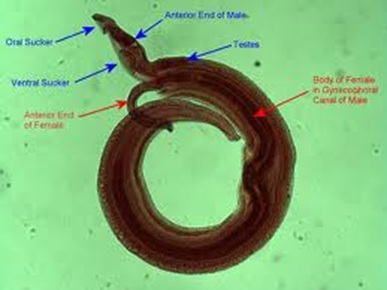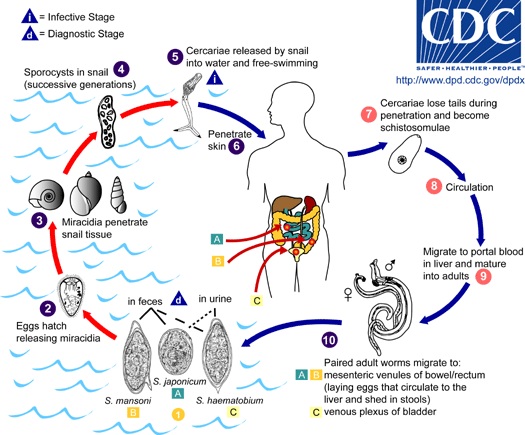The average person shows absolutely no interest in invertebrates. They’re tiny, and sometimes disgusting. Yet there’s more to them than what meets the eye. I came across quite an interesting aspect of the schistosomes when we were studying them during our lab session last week.
Schistosoma is a bit of a tongue-twisting name. The word “schisto-some” means ‘split body’. This is due to a unique characteristic it possesses, which is what this article is mainly going to deal with. It’s a flatworm and it needs a proper introduction.
Kingdom : Animalia
Phylum : Platyhelminthes
Class : Trematoda
Reproduction is a vital component of the lifestyle of any animal. It’s what guarantees the sustenance of subsequent generations. Trematodes, also known as flukes, are no exception. They need to reproduce in order to ensure their survival. However, an interesting fact about these trematodes is that they’re parasites. That is, they live attached to a host’s body and obtain the necessary nutrients from this body while causing some sort of adverse effect on the host.
Schistosomes live within the vertebrate vascular system and hence are also called ‘blood flukes’. You’d think that the Schistosome is no different from the other flukes. But no, they are. Blood flukes differ from most other flukes by being dioecious (having separate sexes). Males are larger than their female counterparts and they possess a unique ventral groove called the Gynecophoric Canal. This groove ‘encloses’ the female within it. The paired worms move against the flow of blood to their final niche where they begin egg production.
A parasitic organism is restricted in its movements when compared to a free living one. It has to remain attached to a particular surface. It can obtain the required nutrients in this manner. However it cannot meet its reproduction needs this way. It would be inconvenient to go looking for a mate when it is too busy hanging onto the skin of the blood vessels. So this arrangement with the Gynecophoric Canal comes in very handy in such a situation. This way you don’t need to go looking for your mate.
Schistosomes are responsible for causing schistosomiasis. Humans get infected when the tailed cercaria larva burrow into the exposed skin of individuals bathing or swimming in such habitats.
Their lifecycle is quite complex in that they have 2 hosts, an intermediate host (eg: snail) and a primary host (eg: mammals like cows, humans).
So that sums up the life history (and story) of a typical Schistosome. The male appears to be very controlling and possessive of its mate. The Gynecophoric Groove sure makes their lives easier. Once found, together forever!


